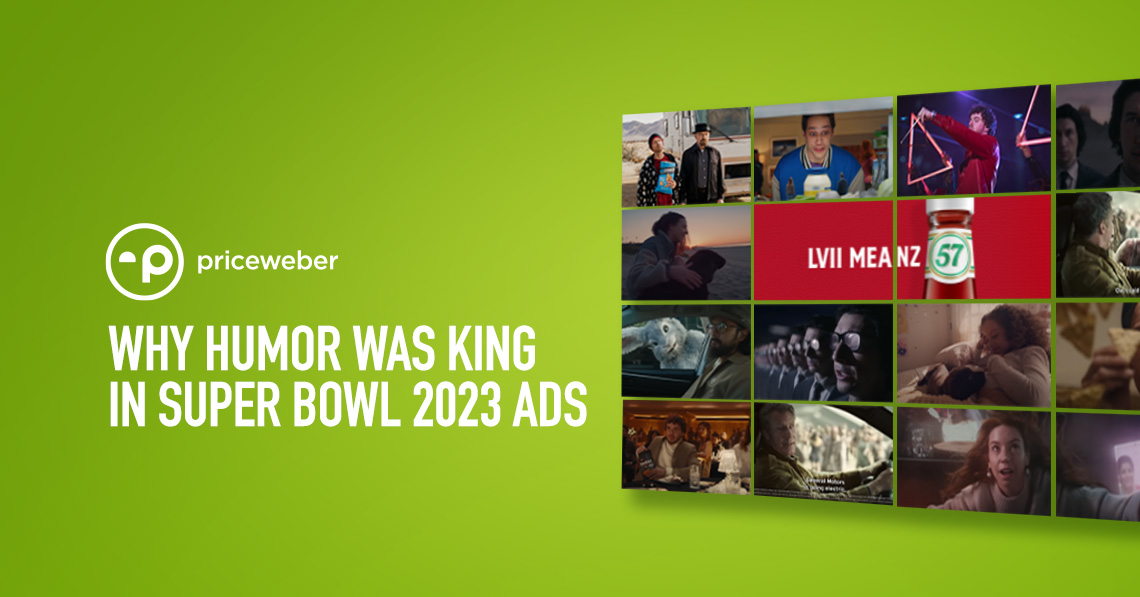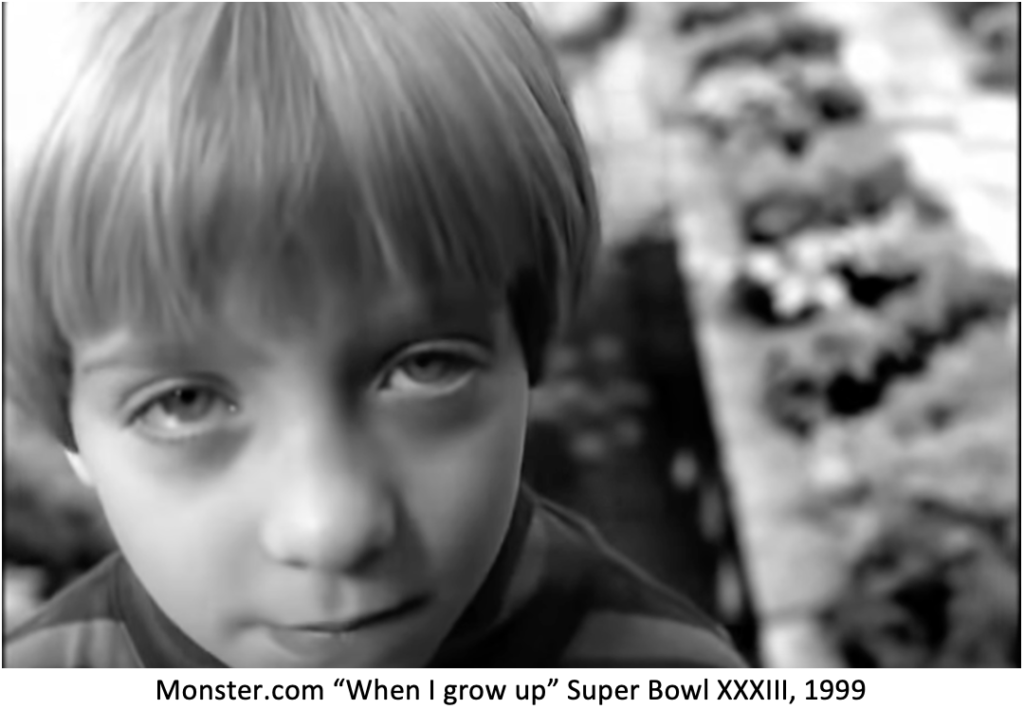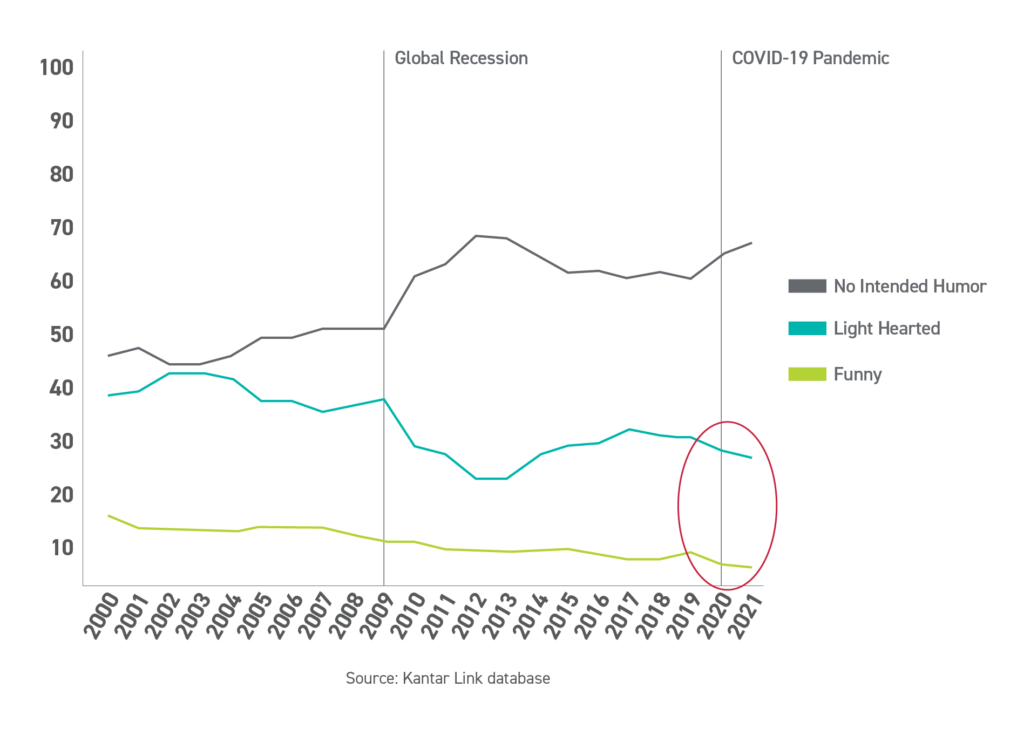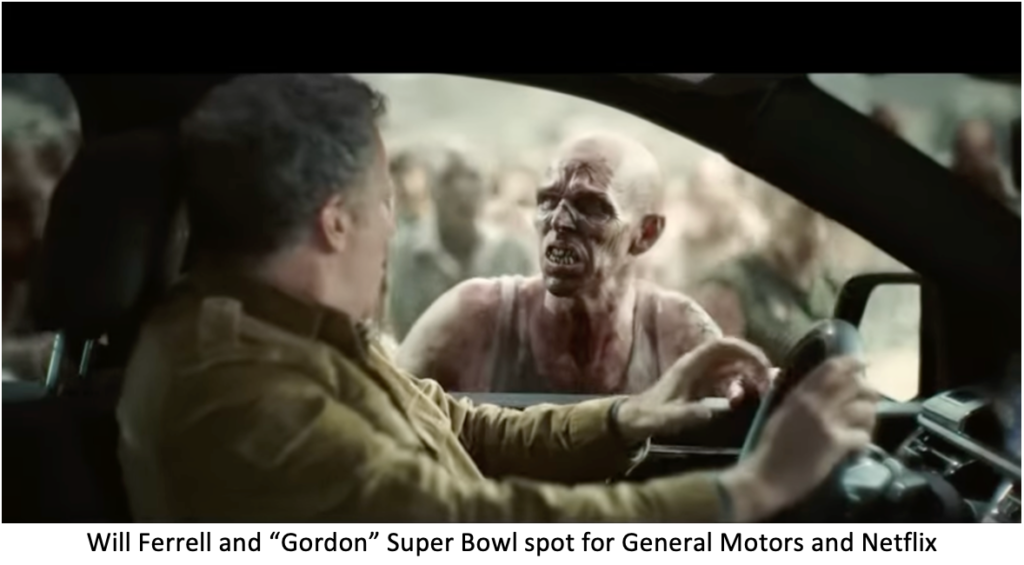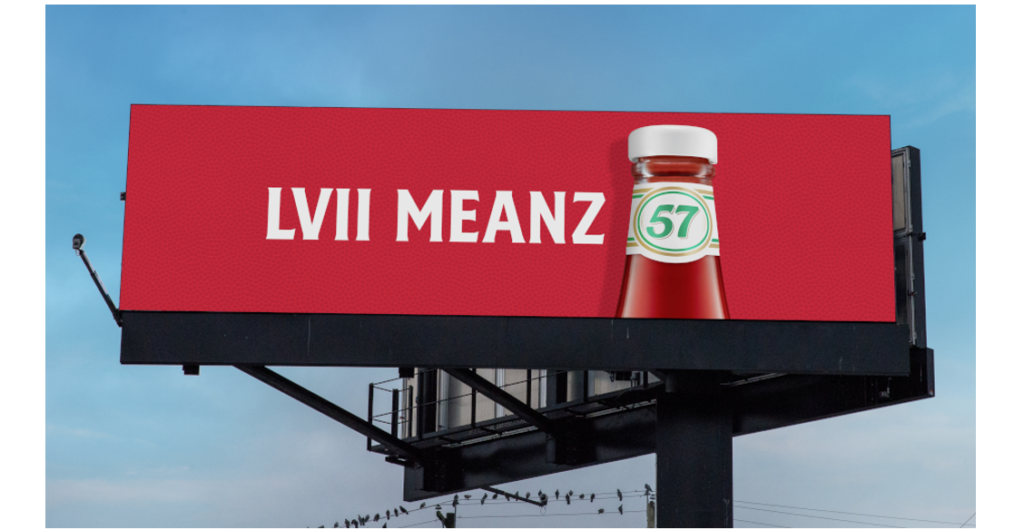It’s that time of the year in ad land when we take a look at the commercials produced at exorbitant cost and placed at, well, exorbitant cost to give brands (and ad agencies) their thirty seconds of Super Bowl fame. But something seemed a little different this year, and it’s not just the absence of twenty different cryptocurrencies running ads. When we previewed 86 or so Super Bowl and “Big Game” related commercials and teasers, we began to notice that almost every single one was funny (or tried to be, bless their hearts). In this edition of Plain Talk, we’re going to look at the sudden explosion of humor in advertising, why it’s happening now, and what it means for the future of the business.
But first, let’s get serious
When advertisers spend millions on thirty seconds of ad time in front of 100 million people, they want to grab the viewers’ attention and make them feel… something. Really feel. For years that has meant that at least some of the ads you’d see during the “Big Game” would be tear-jerkers, or ads that made you feel inspired, empowered, romantic or just say “awwww.” What person (with a soul) can watch Dodge Ram truck’s 2013 Super Bowl ad “So God Made a Farmer” featuring Paul Harvey and not tear up a little? In fact, it seems like every year, there has been a significant portion of Super Bowl creativity dedicated to these emotive spots. In 2022, for example, we noted in Plain Talk how nostalgia was dialed WAY up in Super Bowl creative. So, if emotive creative concepts have played such a critical role for so long, why the heavy shift to humor?
Funny isn’t new
So, the elephant in the room is that, yes, of course, there have always been funny Super Bowl and other commercials. According to Kantar, about a third of all ads use some kind of humor. And where the Super Bowl is concerned, some of the most memorable spots have always been funny. Snickers and Betty White? eTrade Baby? Wendy’s “Where’s the Beef?” or (personal favorite) the Monster.com “When I Grow Up” spot.
Not only has humor been a regular fixture in Super Bowl ads (and advertising in general), but it’s also historically been seen as a successful creative strategy. According to a paper published by the Journal of Experimental Psychology, in commercials, “mere association with humor enhances product evaluations and product choice in a way that is dissociated from the accessibility of the product in memory.” What? In plain talk, this means that when you eliminate self-reporting, commercials that use humor have a proven positive impact on brand perceptions AND choice.
Humor took a hit
However, despite the long-standing success of humor in advertising, data from Kantar shows that the number of funny and “lighthearted” ads has been trending downward since the pandemic.
Some experts believe the decline in humor was about the marketing industry “reading the room” during Covid-19. That being silly during a global emergency was inappropriate. Others think that creatives simply were not immune from the general malaise that impacted so many of us who were stuck at home alone during the pandemic. Given this downward trend, why are we seeing this explosion in humor ads for the Super Bowl season? It turns out that the industry may have been misreading Americans. A recent Harris Poll indicated most Americans think that OTHER Americans are negative and pessimistic but that these attitudes don’t extend to the individuals themselves. Basically, most individuals are pretty happy but think everyone else isn’t. Early research that picked up on the former might imply that consumers were more interested in being comforted or consoled than having a laugh, but we were wrong.
The Harris Poll and another report from Oracle both indicated that America was ready to be cheered up and that, in fact, we were hungry for creative, funny ads. Further, Oracle respondents said many did not want a relationship with brands that “could not make them laugh or smile regularly.” Ninety-one percent of respondents said they preferred brands to be funny. Broken out generationally, this number increased among Gen Z (94 percent) and Millennials (94 percent).
Conveniently, these studies were published in time to impact how planners and creatives thought about their future campaigns, including Super Bowl spots, and these trends on a macro level seem to have guided us towards the current tsunami of humor ads washing over our TVs, phones and computers despite continued gloomy news like this recent study from Gallup.
Is humor economical?
It’s probably not super economical when your commercial has Will Ferrell driving an EV from a post-apocalyptic CG universe of zombies through Stranger Things and Squid Game on the way to Bridgerton, but you can get a lot of mileage out of humor spots, even insanely expensive humor spots. Ad creators know that brands love a good deal, and humor ads can deliver in the form of social shareability. According to Sprout Social, the use (or reuse) of humor ads in social media increases the likelihood of social engagement but also website visits, online purchases and recommendations. Further, it appears that humor is “algorithm-friendly.” According to UK creative Simon Richings, powerhouse social channels like TikTok are likely to elevate funny content to user streams because of how their algorithms are built (pushing generally popular interest content rather than just what your friends like). So, while the typical Super Bowl ad may not be “economical,” you can squeeze a lot of value through cross-channel use of your ad creative, and humor ads score high on results.
This isn’t likely to change
What does the trend toward humor mean for your marketing efforts? Based on recent data and ongoing stressors like inflation, the economy and international tensions, it seems like people are still going to be looking to micro-dose humor throughout their day, and they expect brands to help serve that purpose. But this shouldn’t mean that your brand immediately becomes silly. Rather, it may be time to figure out what authentic humor looks like for your brand. Consider which marketing platforms are right for your “humor pillar” and then execute in a way that serves your customer while staying true to your brand like Heinz did with their brilliant LVII means 57 campaign.
Need a hand?
Whether you need a hand with your communications strategy or just aren’t sure how to make funny work for you, we’re here for you. Give us a call at 502-499-4209 or drop us a note here, and we’ll chat.

